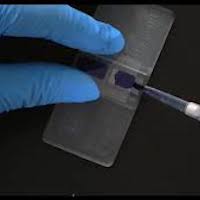Manual cell counting remains the standard method of measuring cell concentration and viability in many laboratories, but automated systems are rapidly eclipsing the capabilities of Hemocytometers.
Initially derived as a method of acquiring a total count for blood cells in suspension, the applications of manual cell counting with Hemocytometers has expanded significantly since its inception decades ago. Technicians now rely on Hemocytometers for analysis of a diverse range of sample types, including semen, urine, phytoplankton, and more. The growing number of applications requiring accurate cell counts and the increasing throughput demands of labs has highlighted the limitations of manual cell counting and emphasized the need for a reliable automated alternative.
In this blog post, DeNovix explores some of the key challenges of manual cell counting with a hemocytometer.
Working Principles of Manual Cell Counting
The hemocytometer is familiar to most laboratory technicians, but it is worthwhile recapping the basic principles of manual cell counting before tackling its inherent challenges.
A hemocytometer is a unique specimen slide characterized by a rectangular indentation that is etched with a grid comprised of nine squares, each with an area of 1 mm2. This lattice is divided into a cross-section that intersects across the central square, creating a subdivision of 0.0025 mm2. A cover glass is placed on top of the sample and held in place at a pre-defined height (typically around 0.1 mm). Given these carefully controlled dimensions, it is possible to observe a defined area of the counting grid and discern – with a reasonable measure of reliability – the number of cells in a specific volume of solution.
Key Challenges of Manual Cell Counting with Hemocytometers
Although manual cell counting is inexpensive, it is plagued by poor repeatability due to common cell counting errors. These can largely be attributed to one of three overarching mistakes:
- Inaccuracy due to human perception
- Pipetting errors
- Poor/incorrect sample preparation
The first is the most pervasive challenge and hardest to counteract when it comes to manual cell counting. Medium- to high-throughput cell counting using a hemocytometer is time-consuming and laborious. As manual cell counts are dependent on human visualization and interpretation, these factors can have a significant impact on the quality of results and test repeatability. Distinguishing non-viable and viable cells from cell debris, for example, depends on individual expertise and personal threshold criteria. This personal method of cell counting also makes it difficult to establish a set of standardized protocols that all users can follow within and across labs.
Pipetting the incorrect volume of sample material can also disrupt results by increasing the height of the sample chamber. As all results are based on an estimated volume, pipetting a greater or lesser volume of sample material can result in significant cell counting errors. Likewise, poor sample preparation can result in a raft of issues downstream. Selecting the appropriate assay and homogenizing the sample correctly is critical for achieving a test sample that is reflective of the source material. A lack of standardized protocols and a reliance on individual judgment can complicate this challenge further.
Benefits of Automated Cell Counting
The capabilities of automated cell counters have improved dramatically in recent years, providing a truly cost-effective alternative to hemocytometers and other manual cell counting slides. Although the up-front investment is greater, automatic cell counting systems like the CellDrop™ from DeNovix can accelerate your testing methods and significantly improve the quality of your results.
If you would like to read a more detailed comparison, we compared manual to automated cell counters in more depth in a previous blog post: Manual vs. Automated Cell Counters.
DeNovix: Leading Automatic Cell Counter Suppliers
DeNovix is one of the industry leaders in the supply of specialist laboratory instrumentation for advanced life sciences applications. We are uniquely equipped to help you overcome established challenges in your cell counting application.
For more information, please contact a member of the DeNovix team today.




